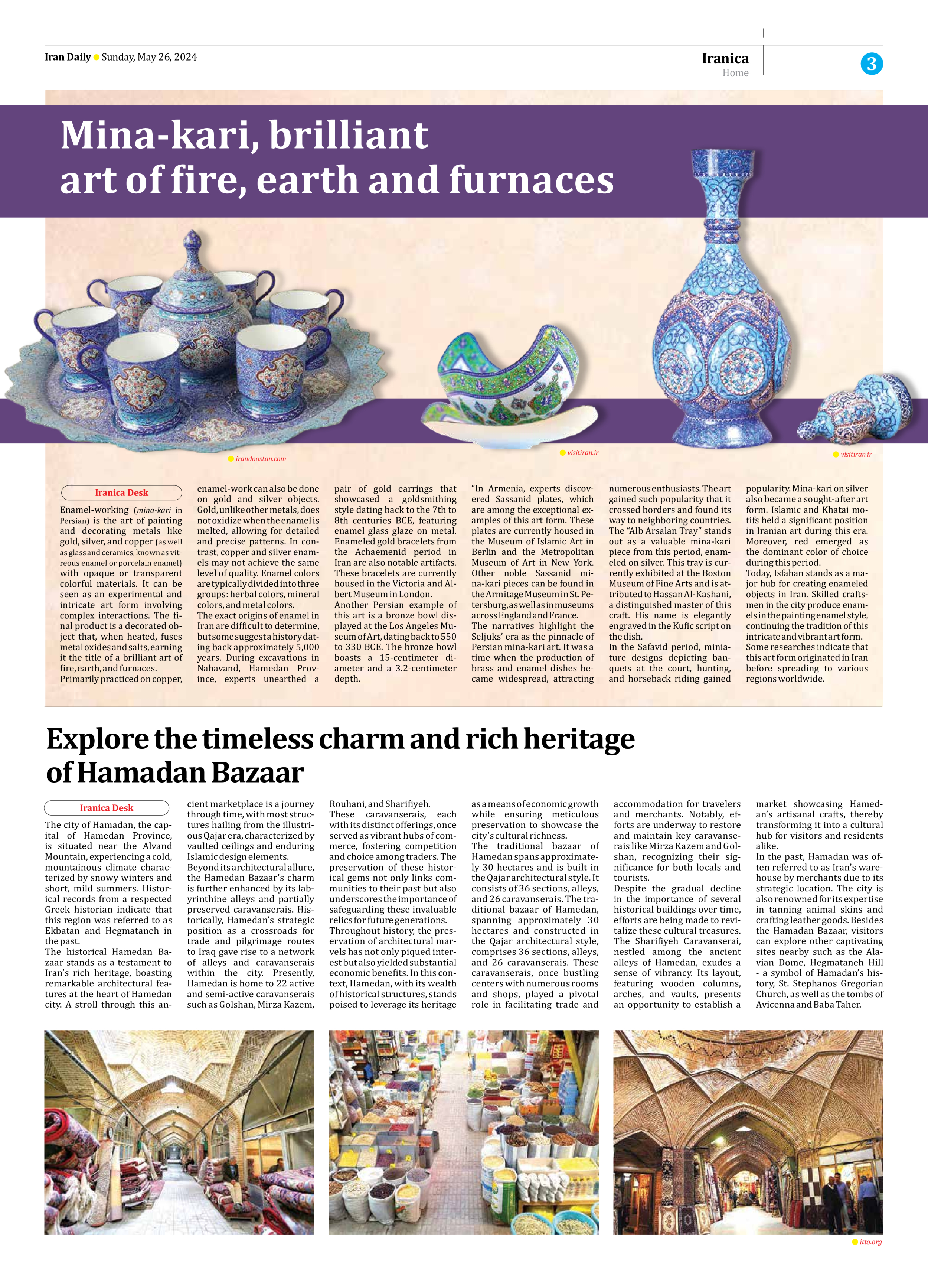
Mina-kari, brilliant art of fire, earth and furnaces
Enamel-working (mina-kari in Persian) is the art of painting and decorating metals like gold, silver, and copper (as well as glass and ceramics, known as vitreous enamel or porcelain enamel) with opaque or transparent colorful materials. It can be seen as an experimental and intricate art form involving complex interactions. The final product is a decorated object that, when heated, fuses metal oxides and salts, earning it the title of a brilliant art of fire, earth, and furnaces.
Primarily practiced on copper, enamel-work can also be done on gold and silver objects. Gold, unlike other metals, does not oxidize when the enamel is melted, allowing for detailed and precise patterns. In contrast, copper and silver enamels may not achieve the same level of quality. Enamel colors are typically divided into three groups: herbal colors, mineral colors, and metal colors.
The exact origins of enamel in Iran are difficult to determine, but some suggest a history dating back approximately 5,000 years. During excavations in Nahavand, Hamedan Province, experts unearthed a pair of gold earrings that showcased a goldsmithing style dating back to the 7th to 8th centuries BCE, featuring enamel glass glaze on metal. Enameled gold bracelets from the Achaemenid period in Iran are also notable artifacts. These bracelets are currently housed in the Victoria and Albert Museum in London.
Another Persian example of this art is a bronze bowl displayed at the Los Angeles Museum of Art, dating back to 550 to 330 BCE. The bronze bowl boasts a 15-centimeter diameter and a 3.2-centimeter depth.
“In Armenia, experts discovered Sassanid plates, which are among the exceptional examples of this art form. These plates are currently housed in the Museum of Islamic Art in Berlin and the Metropolitan Museum of Art in New York. Other noble Sassanid mina-kari pieces can be found in the Armitage Museum in St. Petersburg, as well as in museums across England and France.
The narratives highlight the Seljuks’ era as the pinnacle of Persian mina-kari art. It was a time when the production of brass and enamel dishes became widespread, attracting numerous enthusiasts. The art gained such popularity that it crossed borders and found its way to neighboring countries. The “Alb Arsalan Tray” stands out as a valuable mina-kari piece from this period, enameled on silver. This tray is currently exhibited at the Boston Museum of Fine Arts and is attributed to Hassan Al-Kashani, a distinguished master of this craft. His name is elegantly engraved in the Kufic script on the dish.
In the Safavid period, miniature designs depicting banquets at the court, hunting, and horseback riding gained popularity. Mina-kari on silver also became a sought-after art form. Islamic and Khatai motifs held a significant position in Iranian art during this era. Moreover, red emerged as the dominant color of choice during this period.
Today, Isfahan stands as a major hub for creating enameled objects in Iran. Skilled craftsmen in the city produce enamels in the painting enamel style, continuing the tradition of this intricate and vibrant art form.
Some researches indicate that this art form originated in Iran before spreading to various regions worldwide.







